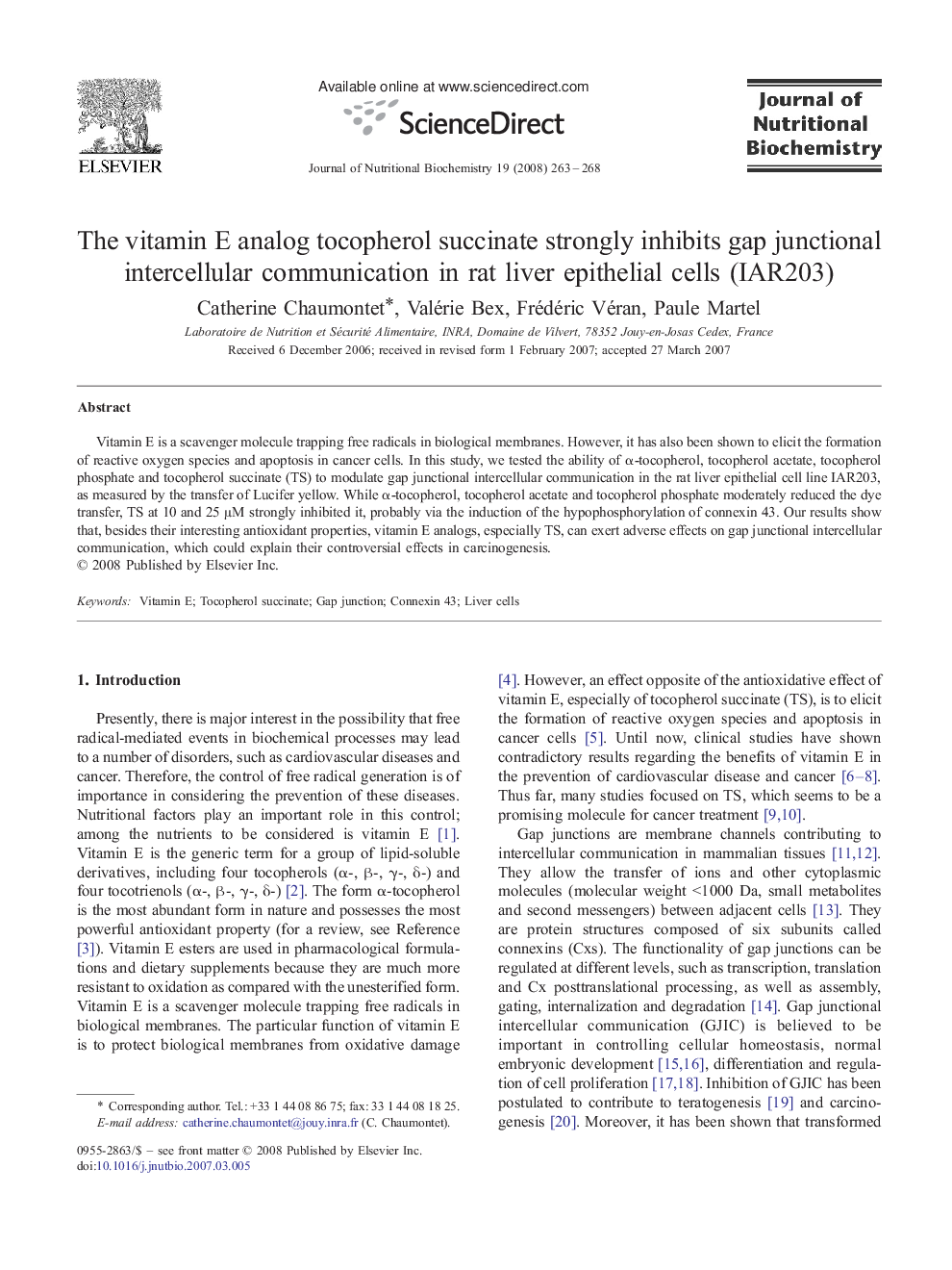| Article ID | Journal | Published Year | Pages | File Type |
|---|---|---|---|---|
| 1990997 | The Journal of Nutritional Biochemistry | 2008 | 6 Pages |
Vitamin E is a scavenger molecule trapping free radicals in biological membranes. However, it has also been shown to elicit the formation of reactive oxygen species and apoptosis in cancer cells. In this study, we tested the ability of α-tocopherol, tocopherol acetate, tocopherol phosphate and tocopherol succinate (TS) to modulate gap junctional intercellular communication in the rat liver epithelial cell line IAR203, as measured by the transfer of Lucifer yellow. While α-tocopherol, tocopherol acetate and tocopherol phosphate moderately reduced the dye transfer, TS at 10 and 25 μM strongly inhibited it, probably via the induction of the hypophosphorylation of connexin 43. Our results show that, besides their interesting antioxidant properties, vitamin E analogs, especially TS, can exert adverse effects on gap junctional intercellular communication, which could explain their controversial effects in carcinogenesis.
